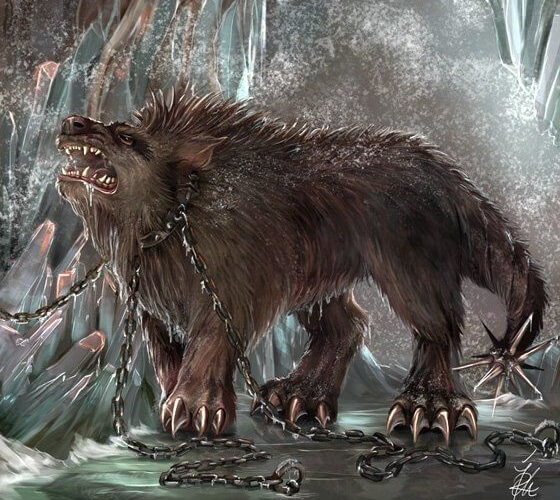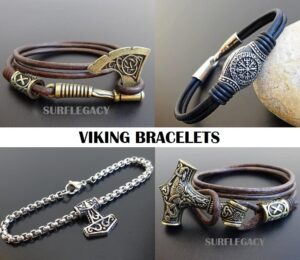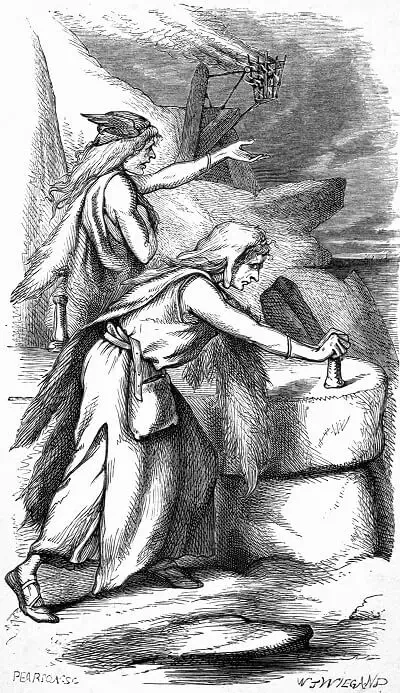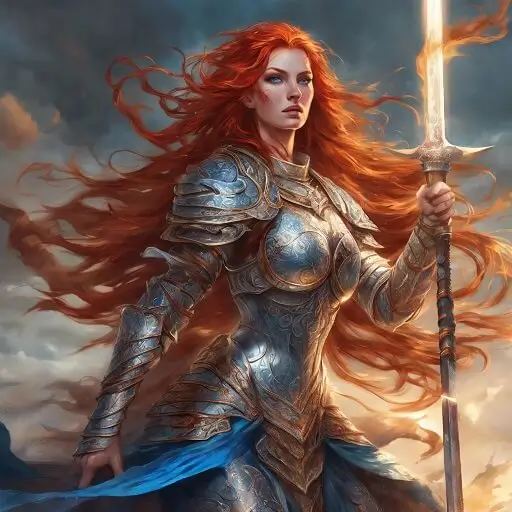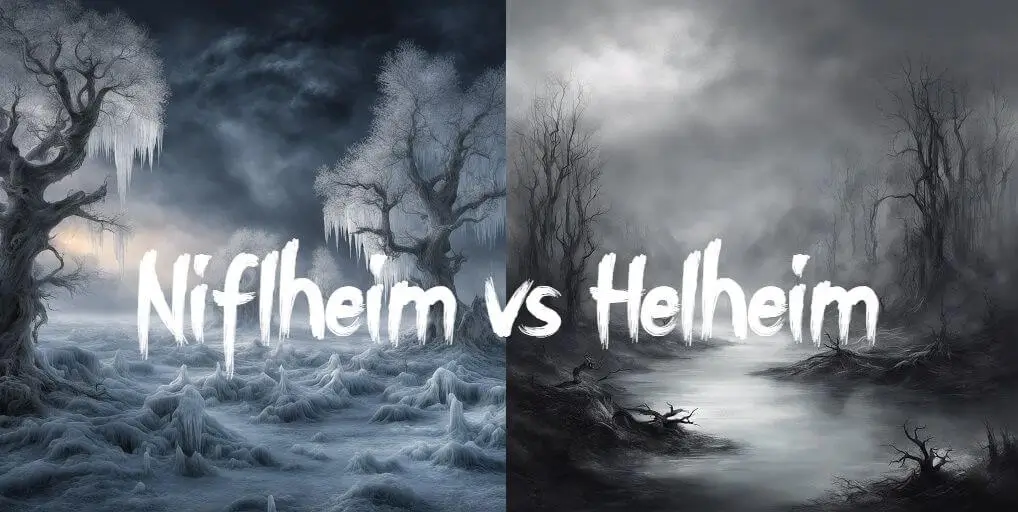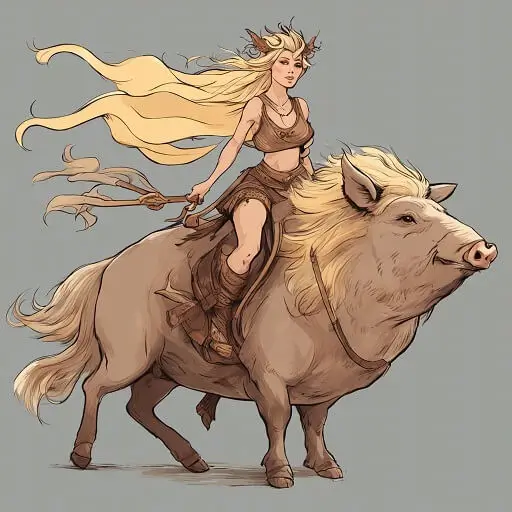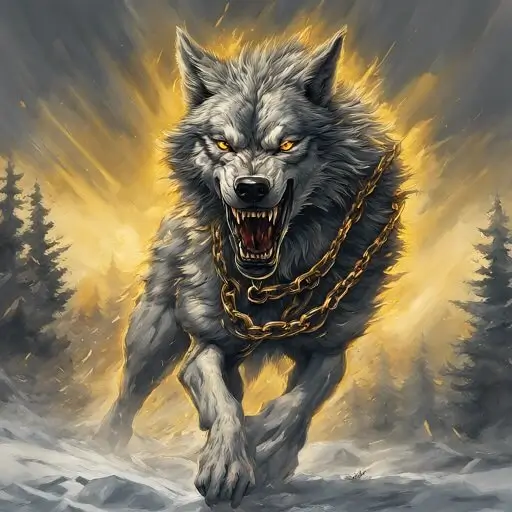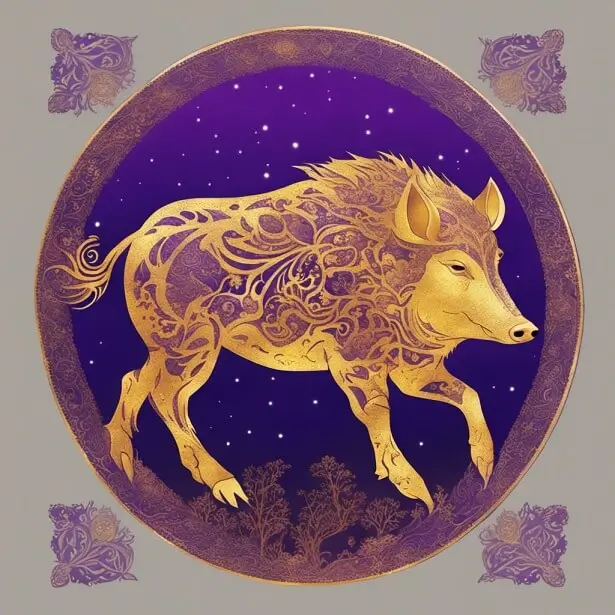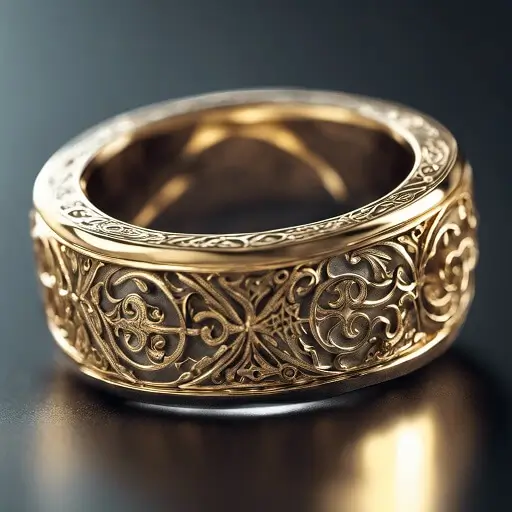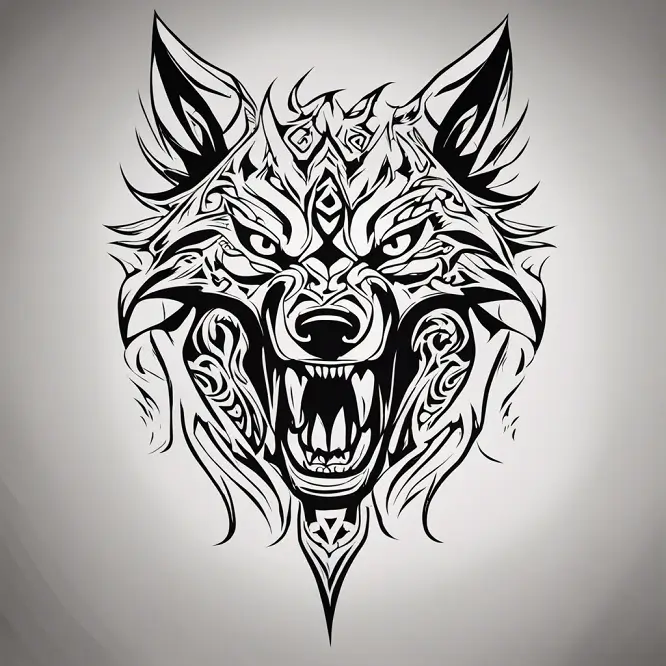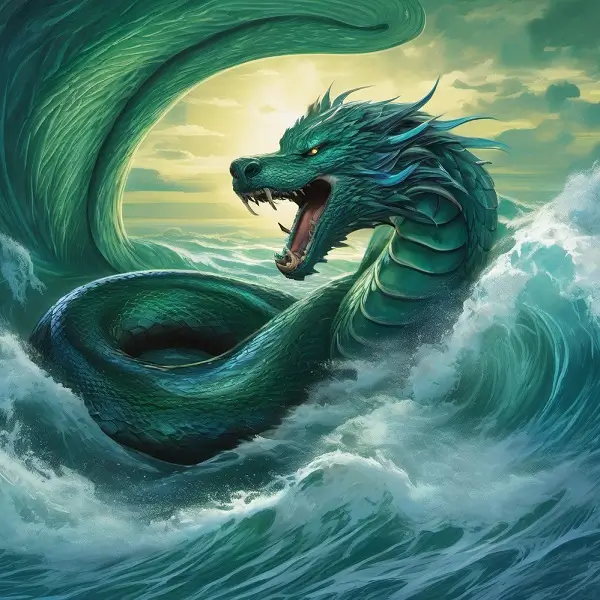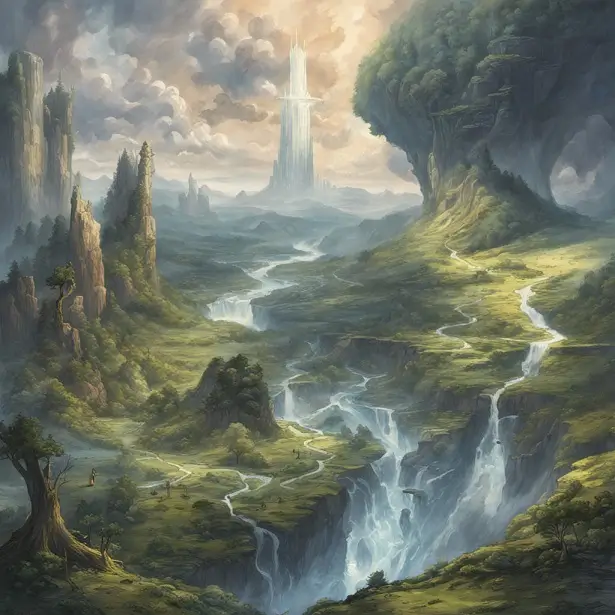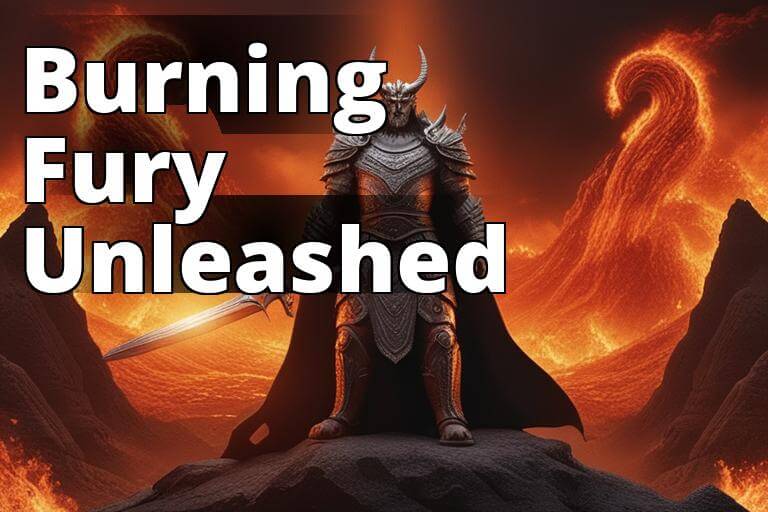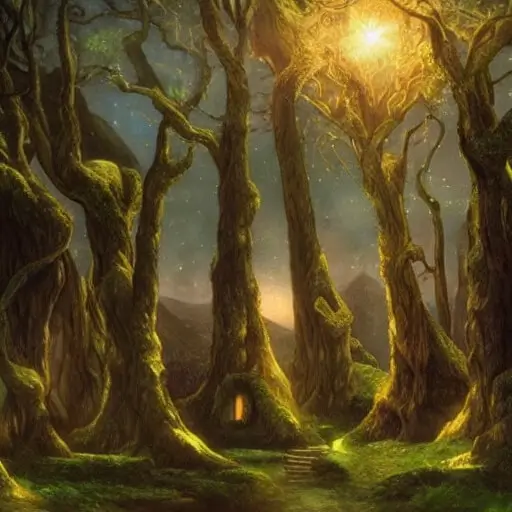Unravel the enigma of Garm in Norse mythology, as we delve into the legend, symbolism, and cultural significance of this fearsome guardian of Helheim.
Mythology has always played a crucial role in understanding the belief systems, values, and worldviews of different cultures. Norse mythology, in particular, has captivated the imagination of many with its vivid tales of gods, giants, and magical beings.
Among the numerous fascinating characters, Garm stands out as a prominent figure. This fearsome hound, known as the guardian of Helheim, has a critical role in the apocalyptic events of Ragnarok and continues to intrigue enthusiasts of mythology to this day.In this blog post, we will explore the various aspects of Garm’s character within Norse mythology.
We will delve into the origins of Garm, his role as the guardian of Helheim, his connection with other mythological hounds, and his enduring presence in modern popular culture.
Who is Garm in Norse Mythology?
In Norse mythology, Garm or Garmr is a fearsome hound, often portrayed as a wolf or dog, who serves as the guardian of Helheim, the realm of the dead. Garm is closely associated with the goddess Hel, who rules over Helheim, and is an important figure in the events of Ragnarok, the prophesized end of the world.
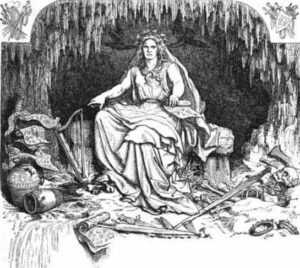
Hel
As the blood-stained guardian of Hel’s gate, Garm’s primary duty is to prevent the souls of the dead from escaping and to stop the living from entering the realm without permission. His fearsome appearance and relentless loyalty to Hel make him the perfect protector for the dark and dreary world of the dead.
The Origins of Garm
Etymology of the name ‘Garm’
The name ‘Garm’ has its roots in Old Norse, where it is believed to mean “raging” or “yelping.” This etymology reflects the fierce nature of the hound and its ominous howling, which is said to herald the coming of Ragnarok. Some scholars also suggest that the name Garm could be related to the Old Norse word ‘garmr,’ which means “heat” or “warmth,” indicating a possible association with fire and destruction.
Garm’s first appearance in ancient texts
Poetic Edda
The Poetic Edda, a collection of Old Norse poems dating back to the 13th century, is the first known source to mention Garm.
The best of trees | must Yggdrasil be,
Skíðblaðnir best of boats;
Of all the gods | is Óðinn the greatest,
And Sleipnir the best of steeds;
Bifröst of bridges, | Bragi of skalds,
Hábrók of hawks, | and Garm of hounds.
One of the most famous poems within the collection, “Völuspá,” describes the events of Ragnarok and includes a reference to Garm, who is said to break free from his chains and engage in a fierce battle.
Now Garm howls loud | before Gnipahellir,
The fetters will burst, | and the wolf run free;
Much do I know, | and more can see
Of the fate of the gods, | the mighty in fight.
Another poem, “Baldrs Draumar,” also mentions Garm as the guardian of the entrance to Helheim.
Prose Edda
Written by the Icelandic historian and poet Snorri Sturluson in the 13th century, the Prose Edda is another essential source of Norse mythology. In this work, Garm is mentioned in the context of Ragnarok, as well as in a list of kennings for the hound.
Then shall the dog Garmr be loosed, which is bound before Gnipahellir: he shall do battle with Týr, and each become the other’s slayer.
Although the Prose Edda does not provide much additional information about Garm, it does solidify his role in the mythological narrative.
Possible influences and connections to other mythologies
Garm’s role as a guardian of the underworld bears similarities to other mythological hounds in various cultures. For instance, the Greek mythological figure Cerberus is a multi-headed dog that guards the entrance to Hades, while the Welsh Cŵn Annwn are spectral hounds that are said to hunt the souls of the dead.
Although there are no direct connections between these figures and Garm, it is possible that the concept of a fearsome hound guarding the realm of the dead is a widespread motif in ancient mythologies, reflecting a shared fascination with the mysteries of the afterlife.
Garm’s Role in Norse Mythology
The guardian of Helheim
Helheim, also known as Hel, is the realm of the dead in Norse mythology. It is ruled by the goddess Hel and is located in the underworld, Niflheim.
Unlike the heavenly realm of Valhalla, where fallen warriors are celebrated, Helheim is a dark and dreary place reserved for those who died of old age, illness, or other non-heroic means.
It is often described as a cold, misty, and gloomy realm, with a massive wall and a heavily guarded gate.
Garm’s duty and purpose in guarding Helheim
As the guardian of Helheim, Garm’s primary duty is to prevent the souls of the dead from escaping and to stop the living from entering the realm without permission. Garm’s fearsome appearance and ferocious temperament make him the perfect protector for this realm.
His presence at the entrance to Helheim not only deters intruders but also serves as a reminder of the fate that awaits those who do not die honorably in battle.
Relationship with Hel, the goddess of the dead
Hel, the ruler of Helheim, is the daughter of the trickster god Loki and the giantess Angrboda. She is often depicted as a stern, yet fair, ruler who upholds the rules of her realm. Garm serves Hel loyally as her guardian, ensuring that her domain remains undisturbed.
The exact nature of their relationship is not explicitly described in the ancient texts, but it is clear that Garm and Hel share a close bond, as both are responsible for maintaining the order of the afterlife in Norse mythology.
Garm’s ferocity and loyalty
Garm is a symbol of ferocity and loyalty in Norse mythology. His unwavering commitment to guarding Helheim demonstrates his dedication to the goddess Hel and the preservation of the afterlife’s balance.
Garm’s ferocious nature is evident in the descriptions of his battles, particularly during the events of Ragnarok, where he fights the god Tyr to the death.
This fearless and steadfast spirit has made Garm a lasting and captivating figure in the realm of Norse mythology.
Garm in the Events of Ragnarok
The prophecy of Ragnarok
Ragnarok, often referred to as the “Twilight of the Gods,” is the prophesized apocalyptic event in Norse mythology. It is a series of catastrophic events, including natural disasters, wars, and the death of major gods, that ultimately result in the destruction of the world. After the devastation, a new world is said to emerge, with life starting anew.
The events of Ragnarok are described in various ancient texts, such as the Poetic Edda and the Prose Edda, which detail the fates of various gods and creatures, including Garm.
Garm’s escape from Helheim
As the events of Ragnarok unfold, Garm is said to break free from his chains in Helheim. This act signifies the collapse of the established order in the world, as the guardian of the realm of the dead is no longer confined to his post. Garm’s escape is accompanied by a loud howl, which serves as an ominous warning that the end of the world is imminent.
The battle between Garm and Tyr
The encounter between Garm and the Norse god Tyr is a critical event during Ragnarok. Tyr, the god of war and justice, represents order and stability in the Norse pantheon. The battle between Garm and Tyr symbolizes the clash between order and chaos, as the guardian of the underworld faces off against the enforcer of law and order.
This conflict exemplifies the larger struggle taking place during Ragnarok, as the old world order crumbles, and chaos reigns.
The fierce battle between Garm and Tyr ultimately results in both of their deaths. Tyr manages to slay Garm, but not before suffering a mortal wound from the hound’s lethal bite. The deaths of Garm and Tyr demonstrate the high stakes and devastating consequences of Ragnarok, as even the mightiest of gods and creatures cannot escape their fates during this cataclysmic event.
Garm’s ultimate fate
Although Garm is killed in battle against Tyr, his legacy as a fearsome guardian and loyal servant to Hel endures. Garm’s death, along with the demise of many other gods and beings during Ragnarok, paves the way for the rebirth of a new world. In this sense, Garm’s demise is not the end but rather a necessary part of the cycle of destruction and renewal that defines Norse mythology.
The Symbolism of Garm
Garm as a symbol of death and the afterlife
Garm’s role as the guardian of Helheim, the realm of the dead, makes him a potent symbol of death and the afterlife in Norse mythology. His fearsome appearance and ferocious nature represent the inescapable reality of death, while his duty to protect the boundaries between the living and the dead highlights the significance of the afterlife in the Norse belief system. Garm’s presence in the events of Ragnarok also underscores the connection between death and renewal, as the destruction of the old world ultimately leads to the birth of a new one.
The representation of loyalty and guardianship
Garm’s unwavering loyalty to Hel and his steadfast commitment to guarding Helheim demonstrate the importance of loyalty and guardianship in Norse mythology. As the protector of the realm of the dead, Garm embodies the virtues of duty, courage, and devotion. His fierce battle against Tyr during Ragnarok further illustrates his steadfast loyalty, as he fights to the death in defense of his realm.
The connection between Garm and other mythological hounds
-
Cerberus from Greek mythology
Garm’s role as the guardian of the underworld is reminiscent of Cerberus, the multi-headed hound of Hades in Greek mythology. Like Garm, Cerberus is responsible for preventing the living from entering the realm of the dead and keeping the deceased from escaping. Both hounds symbolize the boundary between life and death and serve as a reminder of the inevitability of mortality.
-
Cŵn Annwn from Welsh mythology
The Cŵn Annwn, or Hounds of Annwn, are spectral hounds in Welsh mythology that are said to hunt the souls of the dead and accompany the ruler of the Otherworld, Arawn. While the Cŵn Annwn are not guardians of the afterlife in the same way as Garm, they share a connection with the realm of the dead and the mysteries of the afterlife. The presence of these hounds in various mythologies suggests a shared fascination with the afterlife and the enigmatic figures that guard its borders.
Garm vs Fenrir
Garm and Fenrir are both formidable creatures in Norse Myths, but they serve different roles and have distinct characteristics. While Garm is the fearsome hound guarding Helheim, the realm of the dead, Fenrir is a monstrous wolf, one of the children of the trickster god Loki and the giantess Angrboda. Despite their similarities as fearsome canines, their roles within the mythological narrative are quite distinct.
Garm, as mentioned earlier, is the guardian of Helheim, preventing the souls of the dead from escaping and the living from entering without permission. He is loyal to the goddess Hel, the ruler of Helheim, and is associated with death, the afterlife, and guardianship.
Fenrir, on the other hand, is a central figure in the prophecy of Ragnarok. He is foretold to grow to an immense size and strength, causing the gods to bind him with a magical ribbon called Gleipnir, which was made of six impossible things, such as the sound of a cat’s footsteps and the roots of a mountain.

Fenrir remains bound until the events of Ragnarok, at which point he breaks free and wreaks havoc upon the world. During Ragnarok, Fenrir is prophesied to swallow the All-Father Odin, the chief of the gods, resulting in his own death at the hands of Odin’s son, Vidar.
Although Garm and Fenrir are both associated with Ragnarok and share some similarities as fearsome canines, their roles within the Norse mythological narrative are separate and distinct.
Garm is primarily a guardian figure, while Fenrir is an agent of chaos and destruction.
Comparing the two creatures highlights the diversity and complexity of characters in Norse mythology and illustrates how the same basic archetype, in this case, a fearsome canine, can be adapted to serve different narrative functions.
Garm in Modern Popular Culture
Garm’s presence in literature
Garm’s intriguing role in Norse mythology has inspired various authors to include the fearsome hound in their literary works. Modern adaptations of Norse myths, as well as original fiction inspired by Norse mythology, often feature Garm as a character or a reference.
For example, in Neil Gaiman’s “Norse Mythology,” Garm plays a crucial role in the retelling of the Ragnarok story, while in Rick Riordan’s “Magnus Chase” series, Garm is depicted as a monstrous wolfhound guarding the entrance to Helheim.
Garm in movies and television shows
Garm has also made appearances in movies and television shows that draw inspiration from Norse mythology. While not always a central character, Garm is often included as a fearsome creature or guardian in scenes depicting Helheim or the events of Ragnarok.
For instance, Garm can be seen in the background of underworld scenes in some adaptations of Thor and other stories involving Norse gods and creatures. The popularity of Norse mythology in movies and television ensures that Garm will continue to appear in various forms on screen.
Garm’s influence on video games and other media
Video games, particularly those that draw on mythology and fantasy themes, have also been influenced by Garm and his role in Norse mythology. In games like “God of War,” where Norse mythology plays a significant role, Garm can be encountered as a fearsome enemy or as an inspiration for other monstrous hounds.
Garm’s influence extends beyond video games as well, with the hound appearing in tabletop games, graphic novels, and even as inspiration for artwork and tattoos. Garm’s enduring presence in modern popular culture is a testament to the fascinating nature of the character and the timeless appeal of Norse mythology.
Conclusion
Garm’s significance in Norse mythology extends beyond his role as a guardian and participant in Ragnarok. He is also a potent symbol of death, the afterlife, loyalty, and guardianship, embodying the virtues of duty, courage, and devotion.
Garm’s enduring presence in both ancient texts and modern popular culture demonstrates the timeless appeal of this fascinating character and the rich tapestry of stories that make up the Norse mythological tradition.
Shop Norse Jewelry
Are passionate about Vikings or Norse Myths?
Finding the ideal piece of Viking Jewelry can be challenging and time-consuming, especially if you lack inspiration or don’t know where to look.
Surflegacy, has you covered. We have a wide range of Handmade Jewelry in various styles, shapes, colors, and materials, to accentuate your Viking spirit and look. Do not hesitate to visit our selection HERE
Whatever you wear, you’ll find the ideal trendy piece to complement your wardrobe. Our jewelry is designed to be worn every day, no matter where you go or what season is. Are you ready to step up your wardrobe game?

